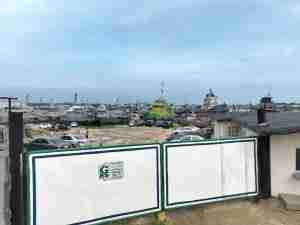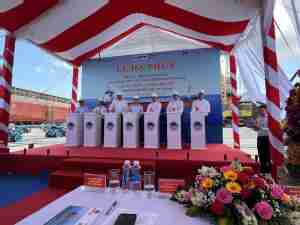With continuing technological advances and efficient yet flexible procedures, tomorrow's port facilities should succeed in meeting rapidly escalating throughput demands, according to terminal operator executives speaking at a May 2 international forum.
'It's not as cataclysmic as it looks,' Steven G. Lautsch, executive vice president of Oakland, CA-based MTC Holdings Corp., said of the industry's ability to handle US container throughput demands that are projected to more than double by 2020. He spoke at the 25th biennial World Ports Conference of the International Association of Ports and Harbors in Houston.
Mark Knudsen, vice president for project management and development for Seattle-based SSA Marine, said he believes more around-the-clock port operations are among ways in which terminal operators can increase throughput capabilities while maintaining profits.
Speaking on the same IAPH panel, John Verschelden, vice president and head of government and regulatory affairs for Netherlands-based APM Terminals International, said he believes parochial interests need to give way to fruitful partnerships. He commented, 'Terminal operators must face the future with foresight and flexibility.'
MTC's Lautsch, whose firm recently added a joint venture at the Port of Houston Authority's new Bayport Container Terminal to augment its portfolio of US West Coast and Atlantic Seaboard operations, outlined what he termed 'six easy steps' terminal operators can follow to help ensure that demand is met.
First, he said, port operators must focus on freight quality. That means a port that is reaching capacity should begin 'demarketing' cargos that do not generate substantial benefits, even if it means sending this less-lucrative business to a competing port.
Second, terminal densification will require higher stacking of containers, as well as up-to-doubling of quayside crane placements to as many as seven gantries per 1,000 feet of berth by 2020, according to Lautsch.
The third step calls for further automation of business processes, including precise tracking and management of all container movements and imposition of 'appointment only' rules for truckers.
'Make Al Gore love us' is how Lautsch defined his fourth step. That translates into using environmentally friendly technology in automation ' a commitment that, he said, will require private investments and tax incentives to succeed.
That leads to the fifth step, which entails investments in infrastructure beyond the water's edge. In that vein, Lautsch said he believes public-private partnerships should be encouraged and a nationwide (or, better yet, North America-wide) logistics infrastructure policy must be firmly in place.
Finally, Lautsch's sixth step focuses on the provision of alternative gateways, such as those under development and proposed for the Pacific coasts of Canada and Mexico.
'What it still comes down to, though, is, 'How are you going to densify your terminals?'' Lautsch said. 'Terminal operating systems are going to become far more sophisticated.'
'Ideal terminal' site
SSA Marine's Knudsen, whose company ranks as largest among marine and rail terminal operators in the United States and Western Hemisphere, offered a seven-point list of attributes he believes would constitute the ever-elusive 'ideal terminal' site:
- Large greenfield site, facilitating scalable development based upon market demand;
- Deep water and stable soils;
- Easy construction access;
- Location on a major trade route;
- Growing volumes, with both exports and imports;
- Excellent inland infrastructure; and
- Support from government and community entities.
'If you can't provide the ability to grow, you will lose the customer,' said Knudsen, who called for flexibility in construction contracting and for transparency and efficiency in permit processes. He also urged terminal operators to align their strategies with the interests of p










